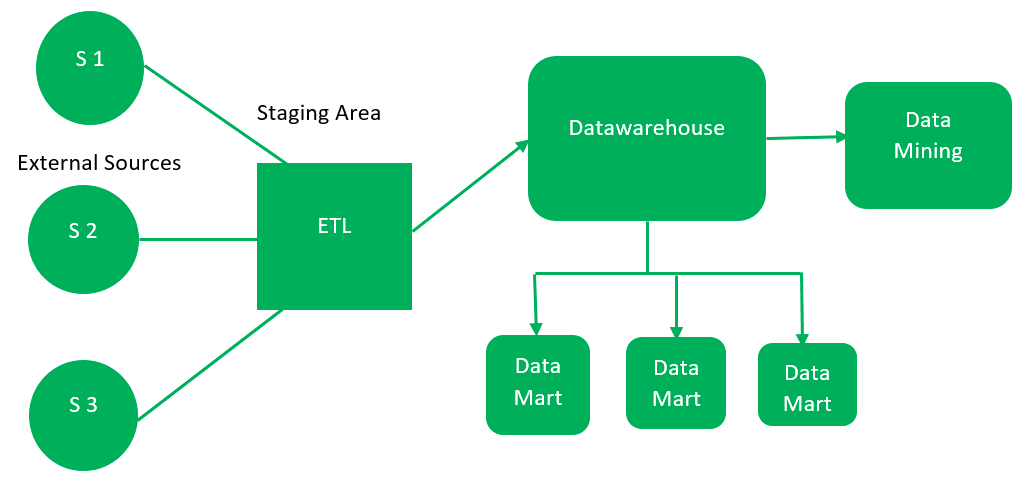Data warehousing is a process of collecting, organizing, and storing data from various sources to support analytical reporting and decision-making. It involves extracting data from operational systems, transforming it into a consistent and structured format, and loading it into a centralized repository called a data warehouse. Here is an overview of data warehousing concepts and architectures:
- Data Warehouse:
A data warehouse is a large, integrated repository of data that is specifically designed to support business intelligence (BI) and analytics. It serves as a centralized, subject-oriented database that stores historical and current data from multiple sources. - Extract, Transform, Load (ETL):
ETL is the process of extracting data from various operational systems, transforming it to a consistent format, and loading it into the data warehouse. Extraction involves collecting data from different sources, transformation involves cleaning, aggregating, and structuring the data, and loading involves inserting the transformed data into the data warehouse. - Data Mart:
A data mart is a subset of a data warehouse that focuses on specific business areas or departments within an organization. It contains a subset of data relevant to a particular business function, making it easier to analyze and report on specific areas of interest. - Dimensional Modeling:
Dimensional modeling is a technique used to design the structure of a data warehouse. It organizes data into dimensions and measures. Dimensions represent the descriptive attributes of the data, such as time, location, and product, while measures represent the numeric values that are being analyzed, such as sales or revenue. - Star Schema and Snowflake Schema:
Star schema and snowflake schema are commonly used dimensional data modeling techniques. In a star schema, the central fact table is surrounded by dimension tables, forming a star-like structure. In a snowflake schema, dimension tables are further normalized into additional tables, resulting in a more normalized structure. - OLAP (Online Analytical Processing):
OLAP is a technology used to analyze multidimensional data stored in a data warehouse. It enables users to perform complex queries and aggregations across different dimensions and hierarchies, allowing for interactive and ad-hoc analysis. - Data Warehouse Architectures:
There are different data warehouse architectures based on how data is stored and accessed:- Single-Tier Architecture: In this architecture, all components of the data warehouse (ETL, storage, analysis) are hosted on a single server, which may limit scalability and performance.
- Two-Tier Architecture: In this architecture, the data storage and analysis layers are separated. The data storage layer consists of the data warehouse itself, while the analysis layer performs data querying and reporting.
- Three-Tier Architecture: This architecture separates the ETL, data storage, and analysis layers. The ETL layer extracts and transforms data, the data storage layer stores the transformed data in the warehouse, and the analysis layer provides tools and interfaces for querying and reporting.
- Hybrid Architecture: This architecture combines elements of both on-premises and cloud-based solutions. It leverages the scalability and flexibility of cloud services while retaining some components on-premises for security or compliance reasons.
Data warehousing concepts and architectures play a crucial role in enabling organizations to store and analyze large volumes of data for decision-making and business intelligence purposes. By structuring and consolidating data from various sources into a central repository, data warehousing facilitates efficient data analysis, reporting, and trend identification, supporting organizations in gaining valuable insights and making data-driven decisions.
